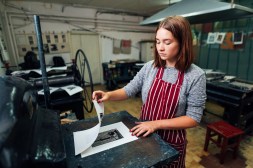Mastering the Art: Essential Tips for Photographing Artwork
Capturing the true essence and beauty of artwork through photography can be a challenging task. Whether you are an artist looking to showcase your portfolio or a gallery owner aiming to promote your collection, it is crucial to master the art of photographing artwork. In this article, we will explore some essential tips that can help you achieve stunning results and effectively market your artwork.
Understanding Lighting and Composition
When it comes to photographing artwork, lighting plays a pivotal role in capturing accurate colors and details. Natural light is often preferred as it provides a soft, even illumination without altering the true colors of the artwork. Position your artwork near a large window or in a well-lit room for optimal results. Avoid using direct flash or harsh artificial lighting as they can create unwanted reflections and shadows.

Composition is another crucial aspect that can greatly enhance the visual appeal of your photographs. Experiment with different angles and perspectives to find the most flattering composition for each piece of art. Consider using the rule of thirds – dividing your frame into nine equal parts – to create balanced and visually pleasing compositions. Remember to leave some negative space around the artwork to draw attention and provide context.
Choosing the Right Equipment
Investing in high-quality photography equipment is essential for capturing professional-looking photographs of artwork. While smartphone cameras have improved significantly in recent years, using a dedicated digital camera with manual settings will give you more control over the final outcome.
A tripod is an indispensable tool when it comes to photographing stationary objects like artwork. It helps eliminate camera shake, ensuring sharp images without any blurriness. Additionally, using a tripod allows you to take longer exposures if needed, maximizing image quality.
To capture fine details accurately, consider using a macro lens or lens with zoom capabilities. These lenses allow you to focus closely on intricate textures or small elements within the artwork while maintaining sharpness throughout.
Proper Editing and Color Calibration
After capturing your artwork, it is crucial to edit the images properly to ensure they accurately represent the original piece. Start by adjusting the exposure, contrast, and saturation levels to match the artwork’s colors as closely as possible. Use photo editing software like Adobe Photoshop or Lightroom for more advanced adjustments.
Color calibration is another vital step in ensuring accurate representation of your artwork. A color calibration tool can help calibrate your monitor to display colors accurately. This ensures that what you see on your screen is what others will see when viewing your photographs.
Creating a Consistent Brand Aesthetic
Consistency across your photography plays a crucial role in developing a recognizable brand aesthetic. When photographing multiple pieces of art, strive for uniformity in terms of lighting, composition, and post-processing techniques. This creates a cohesive look that ties your entire collection together.
Consider creating a style guide for your photography that includes specific guidelines for lighting setups, camera settings, framing techniques, and editing preferences. By following these guidelines consistently, you can create a strong visual identity that sets you apart from others in the art market.
In conclusion, mastering the art of photographing artwork requires an understanding of lighting and composition techniques, investing in quality equipment, proper editing and color calibration, and creating a consistent brand aesthetic. By implementing these essential tips into your photography workflow, you can effectively showcase and market your artwork to potential buyers or art enthusiasts around the world.
This text was generated using a large language model, and select text has been reviewed and moderated for purposes such as readability.


